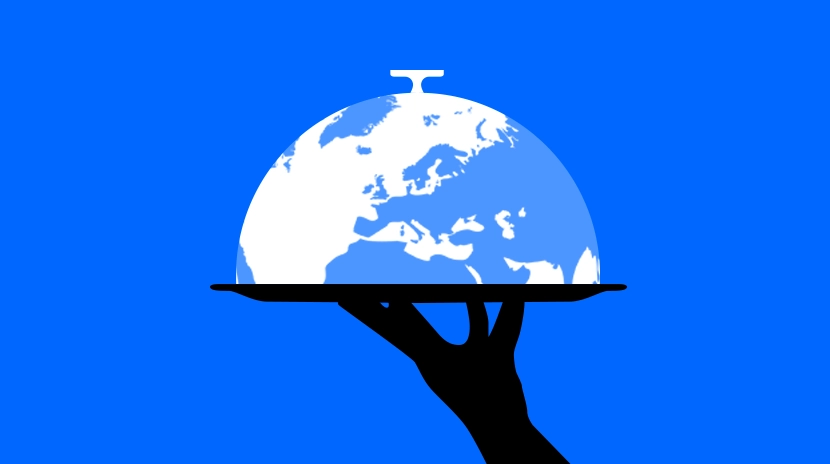Тарифний шторм: відкриття нового наративного простору для Крипто
Примітка редакції: У контексті наростаючих глобальних торговельних війн та частих мит, криптовалюти, завдяки своїм децентралізованим, нецензурним та безкордонним характеристикам, знову демонструють свій потенціал як «безпечний пристань в хаосі». Історія та сучасні події показують, що мита часто призводять до економічних рецесій та ринкових турбулентностей, тоді як криптовалюти тихо будують нову економічну систему, яка не обмежена традиційними правилами, пропонуючи індивідам більшу суверенність та вибір.
Наступне - оригінальний вміст (для зручності читання та розуміння, оригінальний
зміст було відредаговано):
Поскільки торгові війни перетворюють глобальну економічну ландшафт, криптовалюти знову отримали можливість довести свою роль як "безпечний пристань в турботах".
Вступ
«Безумство рідко трапляється у окремих осіб, але в групах, партіях, націях та епохах воно є правилом.» — Фрідріх Ніцше
Ринок в даний момент хвилюється. Як заявив прем'єр-міністр Сінгапуру Хенг Сві Кіт, Сполучені Штати фактично відмовляються від економічної системи, яку вони допомогли створити. Структури, які колись утворювали основу глобальної економічної системи, зараз поступово розбираються. Якщо ситуація залишиться невирішеною, ми можемо розумно очікувати, що ще багато речей зазнає краху.
Криптовалюта завжди була активом, що контролюється на макрорівні. Одним із ключових моментів, на який цього року постійно наголошують прихильники Біткоїна, є "суверенітет".
Bitcoin, як актив, є захистом від геополітичної невизначеності, оскільки це найважча форма грошей, навіть "важча" за золото (у теорії). Проте ця теорія поки не матеріалізувалася. Рух ціни на Bitcoin нагадує високобета-актив, подібний до Nasdaq, який в турбулентні часи далеко перевершував золото.
Цього разу буде інакше?

Короткий розмова про "Тарифи"
Якщо ви хочете побачити, як виглядає «інтелектуальна мастурбація», просто відкрийте Twitter, особливо в ці бурхливі часи, коли всі раптом стають експертами з макроекономіки.
Я не буду мішати вашому мозку, тому спочатку давайте розглянемо деякі основні факти та висновки.
Мита, по суті, створюють неефективності, підвищують ціни для споживачів, спотворюють механізми вільного ринку та викликають відповідні економічні заходи, що в кінцевому підсумку призводить до ескалації конфліктів.
Типовий приклад стався в 1980-х роках. У той час президент США Рональд Рейган, хоча спочатку вводив мита на певні галузі, пізніше усвідомив їх недоліки. У радіовипуску 1987 року Рейган відверто заявив: "Протекціонізм - це в кінцевому підсумку деструкціонізм; він призводить до безробіття."

Чому мита не є доброю річчю
По-перше, фактичні рівні тарифів, які виконує адміністрація Трампа, є найвищими за останні понад 100 років, але причини для їх відхилення виходять за межі просто цього:

Економічний вплив та інфляція
У кінцевому підсумку, мита - це податки на імпортовані товари, і ці кошти сплачуються вітчизняними імпортерами, але зазвичай вони передаються споживачам. Як історичні, так і сучасні приклади неодноразово показують, що мита безпосередньо призводять до зростання цін для споживачів.
Наприклад, Tax Foundation у США заявляє, що останні тарифні політики у США збільшать середнє податкове навантаження на кожну домогосподарство на понад $2,100. Лабораторія бюджету Йельського університету навіть оцінила, що ця цифра може зрости до $3,800 щорічно. UBS також передбачила, що 10% всебічний тариф може призвести до 10% падіння на фондовому ринку.
Непорозуміння дефіцитів торгівлі
Прихильники мит можуть посилатися на "занадто великий торговий дефіцит" як причину для їх введення, але насправді торговий дефіцит не означає, що економіка перебуває в скрутному стані або є "експлуатованою".
Суть торгового дефіциту полягає просто в тому, що країна імпортує більше, ніж експортує. Ця ситуація часто виникає через сильний внутрішній попит споживачів, міцну валюту або те, що країна має порівняльну перевагу в послугах, а не в експорті товарів.
Наприклад, США зберігають великий дефіцит високододаної вартості у сферах послуг, таких як фінанси, технології та передове виробництво. Тепер введення мит, щоб "збалансувати" дефіцит торгівлі товарів - особливо коли багато країн навіть не можуть дозволити собі американські товари - призведе тільки до того, що американські споживачі будуть платити більше за ніщо.
Країни, такі як Камбоджа та Кірібаті, є типовими прикладами. їхні торгові дефіцити існують тому, що ці країни занадто бідні, щоб купувати американські товари, а не тому, що вони займаються так званими "нечесними" торговельними практиками.

Історичні уроки з тарифів
Історично, протекціоністські мита часто спричиняли економічний спад, а не процвітання.
Типовим прикладом є Тарифний Закон 1828 року і поганий Тарифний Закон Смута-Холі 1930 року. Останній спровокував серію відповідних тарифів, що призвело до різкого зниження глобальної торгівлі та загострення економічних страждань, спричинених Великою Депресією.
Економісти в цілому погоджуються, що історія повторно показала, що мита, як правило, завдають більше шкоди, ніж користі.
Навіть президент Мак-Кінлі, якого часто вважають «натхненням» для тарифної політики Трампа, почав виступати проти мит наприкінці свого терміну, визнавши їх негативний вплив на економіку.
Неефективність та міф про зайнятість
Прихильники мит часто стверджують, що вони можуть "оздоровити виробництво" та "привернути роботу". Але реальність полягає в тому, що сучасне виробництво є високо автоматизованим та капіталоємним. Навіть якщо заводи повертаються до США, вони вже не потребують такої кількості робітників.
При продовженні глобальної автоматизації введення мит, щоб повернути виробництво додому, не призведе до "економічного буму", який політики часто обіцяють.
Насправді, більшість виробників просто поглинають вищі витрати або трохи коригують свої ланцюги постачання, щоб перейти до інших країн з меншими витратами, але трохи менш ефективними. Ці дії не призвели до значного створення робочих місць у США.
Непередбачені наслідки часто призводять до економічної стагнації або навіть зниження. Наприклад, Аргентина впровадила політику протекціонізму під час пероністської епохи, і в результаті вона зірвалася з почесного звання однієї з найбагатших країн у світі в довгостроковий економічний спад, з якого вона досі не відновилася.

Стратегічні ризики у глобальній торгівлі
Мита часто навмисно посилюють позицію геополітичних противників, перетворюючи глобальні торговельні шляхи. Історія неодноразово підтвердила, що торговельні війни шкідливі для глобальної економіки: зменшення економік, розриви в ланцюжках постачань та серйозна шкода для споживчого добробуту.
Наприклад, нещодавні широкі мита Трампа не лише підвищили внутрішні ціни в США, але й ненавмисно призвели до вигоди Китаю. Мита вразили країни, такі як В'єтнам, які раніше виступали як "альтернативи" для Китаю, потенційно змушуючи виробництво повертатися до Китаю, оскільки Китай все ще користується економією масштабу та зрілим виробничим системою, залишаючись конкурентоспроможним незважаючи на високі мита.
Ще більше турбує те, що мита можуть легко спровокувати відповідні дії з боку торгових партнерів, спалахуючи торгові війни. Наприклад, Європейський союз намекнув на введення відповідних мит на технологічні компанії США, підвищуючи ризик більш широкого економічного конфлікту.
Ринки Ненавидять Невизначеність
Найбільшим страхом на ринках є невизначеність, а мита - одне з найбільших джерел невизначеності. Після того, як Трамп оголосив про новий раунд мит, ринки відреагували значною волатильністю, і коливання на фондовому ринку стрімко зросли.
Роздрібний, технологічний, товари для споживачів і виробничі сектори найбільше постраждали, стикаючись зі зростанням вартості сировини та зниженням очікувань споживчих витрат.
Крім того, тарифні політики підірвали довіру до долара США, що призвело до зменшення припливу капіталу та послаблення долара, спричиняючи загальну економічну нестабільність. Ця волатильність не лише пошкоджує довіру споживачів та бізнесу, але й пригнічує інвестиції, додатково тормозячи економічний зріст.

Уявлення про національну безпеку
Національна безпека дійсно є однією з небагатьох обґрунтованих причин для введення мит, але насправді митні політики широко зловживаються, що суттєво підриває вірогідність терміну "національна безпека".
Поточні тарифні системи не спрямовані на захист критичних галузей. Замість цього вони майже випадково накладають мита на всі імпортні товари, що призводить до того, що: постраждають не лише стратегічні сектори, а й нестратегічні сектори дуже постраждають, що призводить до загального збільшення витрат.
Криптовалюта: Безпечний пристанок в часи хаосу
Тарифи та торгові війни постійно нагадують нам, що країна, в кінцевому підсумку, є плем'ям людей, і ці люди часто приймають емоційні, самостійні рішення, навіть якщо ці рішення можуть бути нераціональними з більш широкої перспективи.
У такому середовищі криптовалюта стає все більш важливою. Вона представляє справжню індивідуальну суверенність активів і є найчистішою формою "економічної автономії" посеред глобальних турбот.
Крипто можна розглядати як суперцифрову економічну систему, призначену для хаосу.
Рей Даліо правий: торговельні конфлікти часто не стосуються самої торгівлі, але йдеться про ідентичність, національну гордість, внутрішні тиски та емоційні боротьби за владу. Під цими "поверхневими шумами" крипто тихо будує нову економічну структуру без кордонів, мит, та бюрократичних бар'єрів.
Традиційні уряди мають проблеми з відстеженням економічних прибутків та збитків точно, навіть коли мова йде про цифрові послуги та нематеріальні активи, але криптовалюта вже вивела цей концепт на зовсім новий рівень: вона перетинає кордони, політику та обмеження фізичного світу.
Звісно, з технічної точки зору, нам все ще потрібно дослідити, як по-справжньому інтегрувати атрибути блокчейну з бізнес-моделями реального світу (посилаючись на деякі з моїх попередніх ідей), але цей процес вже розпочато.
Заключно: коли світ стає все більше невизначеним і дії урядів стають все більш непередбачуваними, як повинні «суверенні особи» по всьому світу вирішувати, як розподілити свої ресурси?
Відмова від відповідальності:
Ця стаття є репродукцією з [BlockBeats], авторське право належить оригінальному автору [@ManoppoMarco, @primitivecryptoінвестор], якщо у вас є зауваження до перепублікації, будь ласка, зв'яжіться з Gate Learnкоманда, і команда вирішить це якомога швидше відповідно до відповідних процедур.
Попередження: Погляди та думки, висловлені в цій статті, представляють лише особисті погляди автора та не становлять жодної інвестиційної поради.
Інші мовні версії статті перекладаються командою Gate Learn. Перекладена стаття може бути скопійована, розповсюджена або плагіїрована без зазначенняGate.
Пов’язані статті

Зростання та перспективи криптовалют наступного покоління зі штучним інтелектом

XRP Підйом, Огляд 9 Проектів з Пов'язаними Екосистемами

Дослідження Gate: Щотижневі гарячі теми (24-28 лютого 2025 року)

Як знайти нові мемокоїни, перш ніж вони стануть вірусними

Наративні ігри: який наступний трейд?


